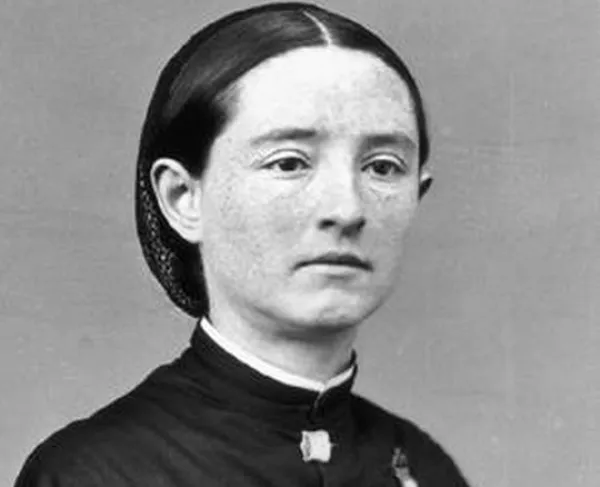Mary E. Walker

Though not honored for any specific deed or gallantry, Dr. Mary Edwards Walker remains to this day the only female recipient of the Medal of Honor. However, her audacious and often controversial career extended well beyond her role in the American Civil War.
Walker was born in the town of Oswego, NY, a small town on the banks of Lake Ontario, in the year 1832 to reform-minded parents who encouraged their children to defy traditional social norms, particularly gender norms in Mary’s case. Besides involvement in a variety of political causes, such as abolition and women’s suffrage, they also stressed the importance of education for all of their children, which greatly influenced Mary’s decision to go into medicine as a profession. After working briefly as a schoolteacher, Walker enrolled in the Syracuse Medical College (which had accepted female students since the 1840’s) and graduated with a medical degree in 1855. Walker also inherited her family’s activist leanings, and so even after settling in the town of Rome, NY with her new husband and a private practice, Walker readily involved herself in the Union war effort after the firing on Fort Sumter.
In 1862, Walker left Upstate New York for Virginia to work in a Union medical camp. After working for a time in several temporary hospitals near battles like Fredericksburg and Chickamauga, treating Union soldiers as well as civilians and some Confederates where she could. Though she served ably in her position, Walker’s politics managed to engender a good deal of controversy as an army doctor, specifically regarding her dress. Rebellion against the restrictive clothing options of the Victorian era had long been a main theme of feminist and suffragist politics at this point, but Walker in particular hated how the typical dresses and cumbersome skirts she was expected to wear interfered with her work. She also thought corsets were unhealthy for women, and so often adopted what was then called the “Bloomer costume” for contemporary women’s rights advocate Amelia Bloomer. The outfit usually consisted of a simpler skirt worn over trousers, an utterly scandalous combination in the 1860’s. In fact, many suffragists at the time felt was too provocative, but Walker found it quite practical, so she wore it anyway, sometimes with an officer’s overcoat to boot (her official rank by war’s end was First Lieutenant).
Her superiors may have been frustrated at what they saw as antics, but throughout the war, Walker had proved her mettle many times over, especially as a prisoner of war. Arrested as a spy while assisting a Confederate doctor perform an amputation, she spent around four months imprisoned at Castle Thunder in Richmond, Virginia until she was released in a prisoner exchange in the summer of 1864. Even in prison, she apparently refused to wear more conventional clothing. After her release, she was assigned to the 52nd Ohio Infantry as an assistant to the regimental doctor. It was her willingness to go behind enemy lines and serve all those in need of care, even at the risk of imprisonment, that may have influenced Congress’ decision to award her the Medal of Honor on November 11, 1865.
After the war, Walker returned to private practice, but continued to make headlines as a lecturer and activist. By the late 1870’s, she finally joined her fellow suffragists in abandoning the Bloomer costume: instead she simply wore men’s clothes for the rest of her life. She claimed that she possessed special permission to dress this way, adding that she had “served for four years in the cause of human freedom.” But that failed to stop several notable instances of harassment and assault, as well as a few arrests for impersonating a man, which in turn failed to convince Walker to moderate her provocative behavior.
Sadly, Mary Walker faced one final indignity in 1916, when Congress decided to revoke her Medal of Honor, along with up to 900 other individuals who received the medal. The decision surprisingly had nothing officially to do with her gender; rather it was focused on those who had been honored as civilians during the war, as no equivalent civilian medal existed at the time. William “Buffalo Bill” Cody also lost his award in the exact same decision. Walker and many others protested the decision, the government only returned it to her in 1977 at the behest of her surviving relatives and the Carter Administration. Obviously, Walker herself did not live to see the reversal, as she died only two years later and was laid to rest in her home town of Oswego. As it happens, she still continued to wear the physical medal in all her public appearances. She was, after all, never the most deferential to authority.





